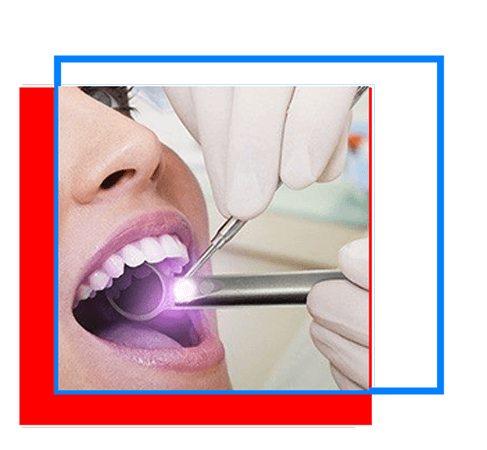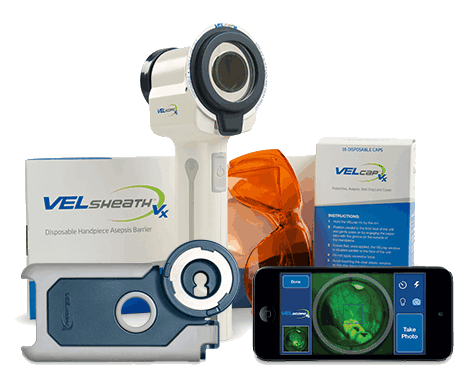Oral Cancer Screening
Oral Cancer Screening May Just Save Your Life!
Dentists play a crucial role in detecting and preventing oral cancer. Using tobacco and alcohol can increase your chances of developing oral cancer. We kindly suggest scheduling an annual oral cancer screening to ensure your optimal oral health.

What is oral cancer?
Oral cancer is a broad term that includes cancers of the lips, tongue, mouth and throat. In general, it is an abnormal growth of cells in any one of these sites and has the potential to spread to other areas of the body.
About Oral Cancer
You may be surprised to learn that one American dies every hour from oral cancer; a death rate that has remained virtually unchanged for more than 40 years. Oral cancer can go unnoticed until it has progressed to later stages. Recent statistics published by the American Cancer Society indicate that while the incidence and death rates for cancers overall has decreased, the incidence of oral cancer has increased by 5.5% and the death rate has increased by 1.5%. Oral Cancer KILLS as many people as melanoma, and is now more common than leukemia.
Importance of Screening
As with any cancer, early detection and diagnosis is key; it’s important for patients to see an oral healthcare professional regularly, particularly if they are in the high-risk groups — those who use tobacco, abuse alcohol or have been exposed to HPV. Oral cancer is 90% curable when found in its early stages. Unfortunately, 70% of oral cancers are diagnosed in the late stages, III and IV, leading to a five-year survival rate of 57%.
Deadly Statistics
- Twenty-five percent of all oral cancer victims are non-smokers, non-drinkers and have no other lifestyle risk factors.
- In the U.S., one person dies from oral cancer every hour. In Canada, three people die from oral cancer every day. In India, it is one of the leading causes of cancer-related deaths.
- Research from Johns Hopkins Hospital and other medical institutions suggests that the human papillomavirus (HPV) 16, a common sexually transmitted virus, is associated with oral cancers located in the upper throat and back of the tongue.
- According to the American Cancer Society, oral cancer affects more than 35,000 people in the U.S. each year.
- Oral cancer causes 7,500 deaths each year and only slightly more than half of oral cancer patients survive five years.
- Seventy percent of oral cancer cases are diagnosed at a late stage, which partially accounts for the poor five-year survival rate of approximately 60 percent.
- The five-year survival rate for patients who have localized disease at diagnosis is 82 percent compared with only 28 percent for patients whose disease has metastasized.
- The National Cancer Institute’s Surveillance Epidemiology and End Results program (SEER) and the Oral Cancer Foundation report that approximately 100 people in the U.S. are diagnosed with oral cancer every day.
- Oral cancer is twice as prevalent in men as it is in women.
Educational Video on Oral Cancer
Call US NOW at 770-271-4411 to setup an Appointment. Detecting and treating dental problems at an early stage may save you time, money, unnecessary discomfort, and your teeth!
Oral Cancer Facts
- Approximately 53,000 Americans will be diagnosed with oral cancer in 2019.
- Worldwide the problem is much greater, with new cases exceeding 640,000 annually.
- In the US, approximately 132 new individuals each day will be diagnosed with oral cancer.
- The fastest growing segment of the oral/oropharyngeal cancer population comes from HPV16, a virus that goes unnoticed with no precancerous signs.
- Approximately one person every hour of every day 24/7/365 will die from oral cancer in the US alone.
- While not related to biology, oral cancer occurs in blacks 2 to 1 over whites.
- Oral cancer occurs in men 2 to 1 over women.
Risk Factors
- Tobacco use in all of its forms and alcohol are major risk factors for developing oral cancer.
- While the vast majority of oral cancers (front/anterior of mouth) are related to tobacco andalcohol, about 10% of these cancers come from unknown causes. This includes all three types ofcancers found in the oral environment: Squamous Cell Carcinoma (SCC), Adenoid CysticCarcinoma (ACC), and Mucoepidermoid Carcinoma (MEC).
- The unknown etiology cancers may arise from a genetic aberration or frailty or from a yet unidentified common shared lifestyle risk factor..
Signs and Symptoms
- Any sore or ulceration that does not heal within 14 days.
- Any abnormality that bleeds easily when touched (friable).
- A lump or hard spot in the tissue, usually border of the tongue (induration).
- Tissue raised above that which surrounds it; a growth (exophytic).
- A sore under a denture, which even after adjustment of the denture, that does not heal.
- A lump or thickening that develops in the mouth.
- A painless, firm, fixated lump felt on the outside of the neck, which has been there for at least two weeks.
- All the above symptoms have the commonality of being persistent and not resolving.
Signs Found Through Verbal Inquiry
- Patient reports sensation that something is stuck in their throat when swallowing or other difficulty in swallowing.
- Patient reports ear pain that occurs on one side only.
- Patient reports unexplained numbness in the mouth or lips.
- Patient reports hoarseness or sore throat that does not resolve within a few weeks.

In Honor of Oral Cancer Awareness
Free Oral Cancer Screening
In Month of May
The office of Dr. Nimisha Patel (Radiant Dental) has partnered with The Oral Cancer Foundation in honor of Oral Cancer Awareness Month and will be offering free oral cancer screenings on Month of May to the public.
Contact US
Address
Business Hours
| Mon, Wed | 8:30 AM – 5:00 PM |
| Tue, Thurs | 11:00 AM – 7:00 PM |
| Saturday | 8:00 AM – 2:00 PM |

